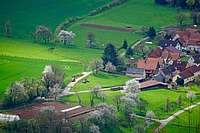Fitness Check of the Common Agricultural Policy (CAP)
Is the CAP fit for purpose?
Our comprehensive analysis of the CAP, spanning 260 pages, 12 topics and based on nearly 500 references, indicates that the CAP is not fit for purpose - and in its current design, it is unlikely to deliver on the UN's Sustainable Development Goals (SDGs).
You may access our full report here:
PowerPoint presentations:
News
March 2020: Scientists call for action for the EU CAP to address sustainability challenges - An open statement, signed by over 3600 scientists across Europe and beyond
Guy Pe'er is a researcher at sDiv, the synthesis Centre of iDiv. He is also affiliated with Helmholtz Centre for Environmental Research - UFZ (Dept. Ecosystem Services and Dept. Economics).


